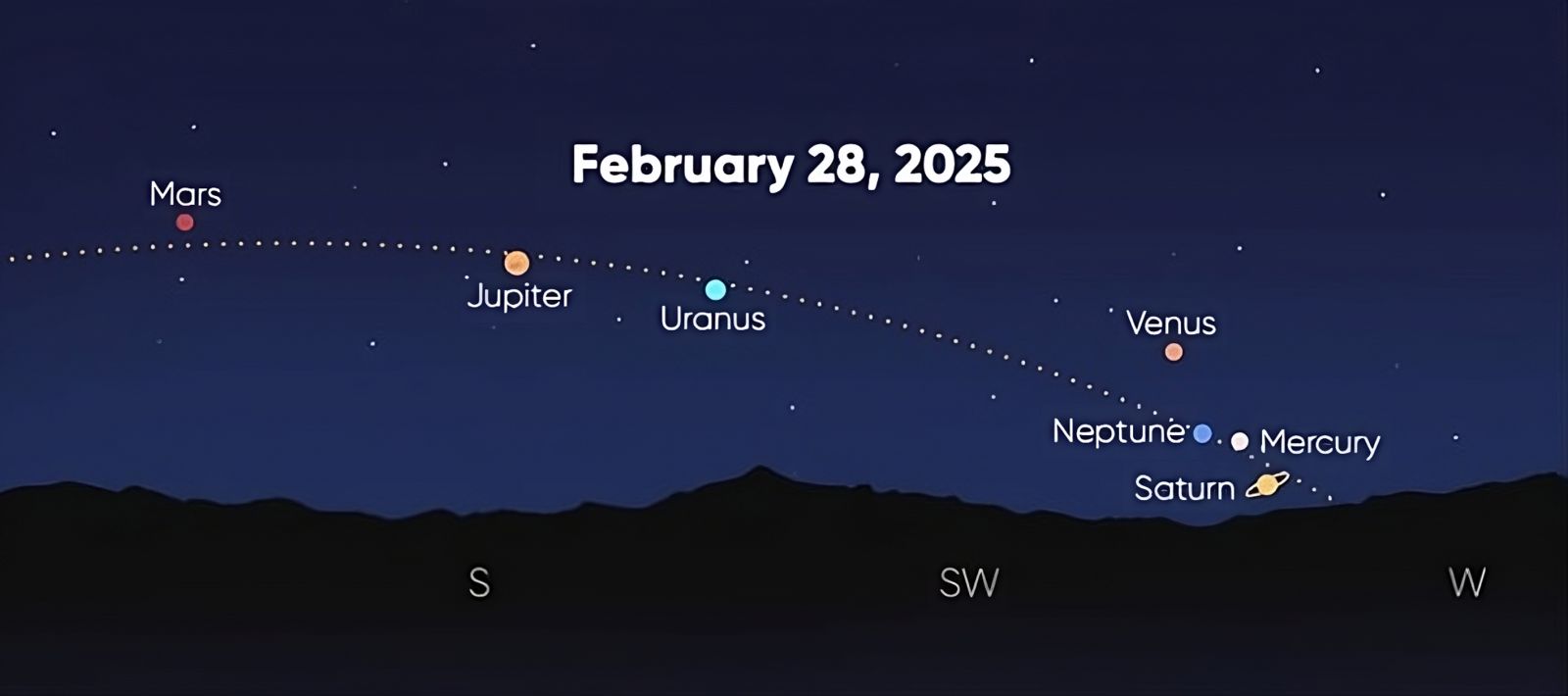Follow us on Google News (click on ☆)
These phenomena, often referred to as alignments, do not correspond to the image of a perfect straight line. In reality, the planets will appear in the sky along a nearly straight trajectory, offering a spectacular view for observers. This spectacle, visible to the naked eye for some planets, will require instruments for others.
An alignment not so perfect
Contrary to what one might imagine, the planets will not form a perfect straight line. According to astronomers, such an alignment is impossible in our Solar System. The orbits of the planets, although located on an ecliptic plane, have slight inclinations that prevent an exact linear arrangement.
This apparent arrangement of the planets is explained by Earth's perspective. From our observation point, they appear to cluster in a specific area of the sky, forming a nearly straight trajectory. This phenomenon, although visually impressive, simply results from their relative positions to Earth.
Which planets to observe?
On January 21, six planets will be visible: Venus, Mars, Jupiter, Saturn, Uranus, and Neptune. Among them, Venus, Mars, Jupiter, and Saturn can be observed with the naked eye, while Uranus and Neptune will require binoculars or a telescope. Mercury will join this celestial dance starting February 28, completing the alignment of the seven planets.
The best time to observe these planets will be just after sunset. Venus, particularly bright, will be easily spotted in the west, followed by Saturn and Neptune, which will quickly disappear below the horizon. Mars, Jupiter, and Uranus will remain visible longer, offering an extended view of this celestial spectacle.
How to make the most of the event?
To observe these planets under the best conditions, it is recommended to move away from urban areas and their light pollution. Dark sky reserves, such as the Pic du Midi de Bigorre or the Cévennes National Park, will offer ideal conditions.
Digital tools, such as the Sky Tonight app or the Time and Date website, will make it easy to locate the planets in the sky. These resources, accessible to everyone, will guide observers to ensure they don't miss any part of this event.
Other astronomical events in 2025
The year 2025 promises other notable celestial phenomena. A partial solar eclipse is expected on March 29, followed by two total eclipses on March 14 and September 7. Aurora enthusiasts will also benefit from intense solar activity, offering bright and colorful nights.
These events remind us of the beauty and complexity of our Solar System. They provide a unique opportunity to contemplate the Universe around us, while prompting reflection on our place in this vast cosmos.
